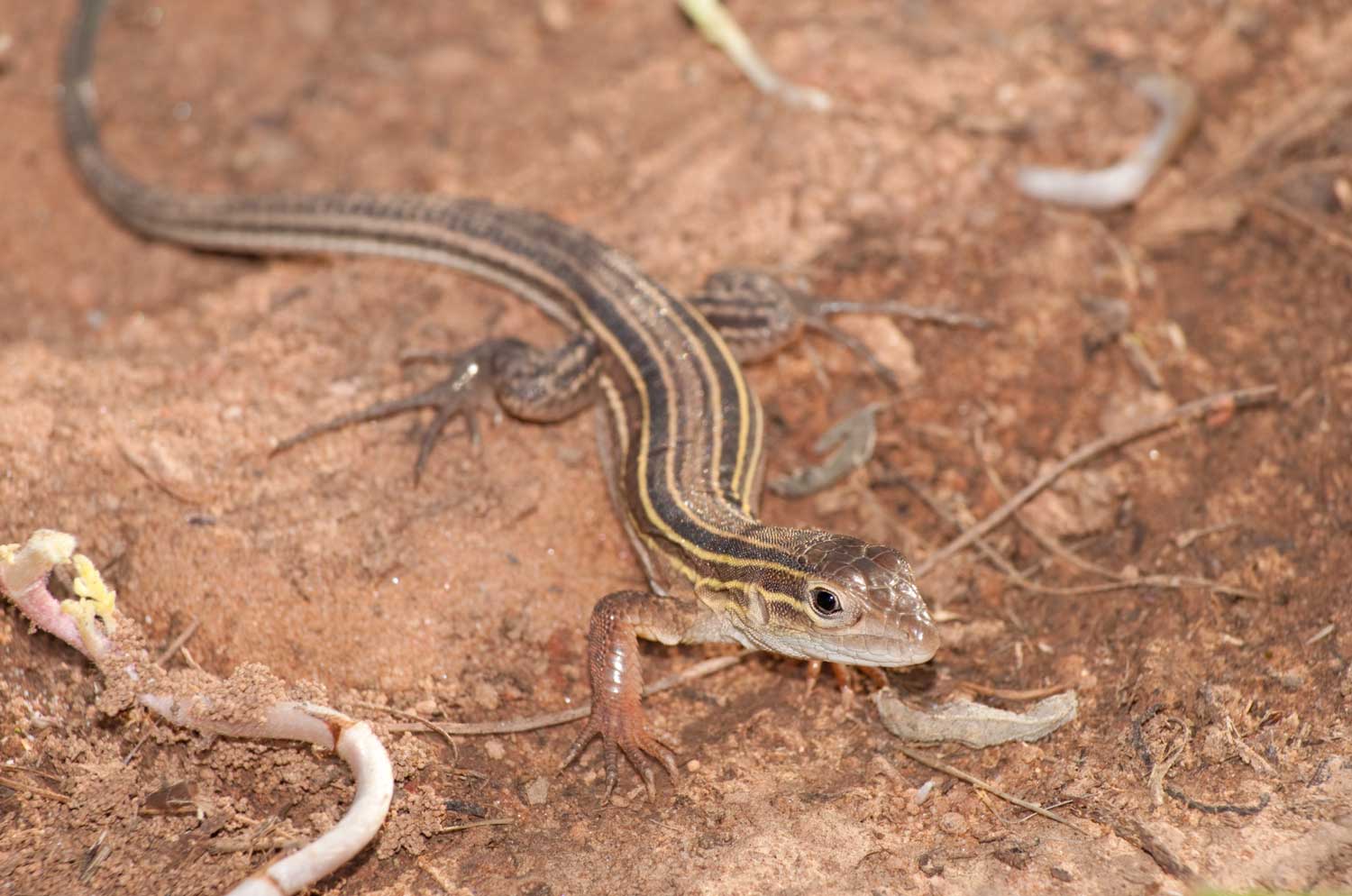Things we love: The surprising six-lined racerunner

About this series: While many people love nature, different people love different aspects of it. One may have a soft spot for flowers, while another gravitates toward a particular animal. And yet for others, it's all about the scenery. "Things We Love" explores those jaw-dropping parts of nature that one person finds particularly special. In this edition, Erin Ward, an interpretive naturalist at Four Rivers Environmental Education Center, tells us why she loves six-lined racerunners.
I will never forget the first time I saw a lizard in Will County.
It was a hot summer day at Braidwood Dunes and Savanna Nature Preserve. All the Forest Preserve naturalists had gathered together for a very special professional development program, “Sounds of the Night-Insects,” led by Carl Strang, author of “Singing Insects of the Chicago Region.”
The learning experience began with us sitting in the shade learning about and listening to insects. Out of the corner of my eye, I saw something scurry across the ground from one car to the next, scampering from shady spot to shady spot.
I turned my attention to this little creature — what was it that had caught my eye? And there it was; it had sneaked out from underneath a car and I got a good look. A lizard! No way! It was a six-lined racerunner.
It was then that my fascination with this creature began. The questions poured out. Why is it here? How does it survive our cold winters? Why is it in this preserve and not other preserves?
Six-lined racerunners are fast little creatures, zipping from here to there eating insects, spiders and other invertebrates. They can grow to be almost 9 inches long. They love the sandy soil of Braidwood Dunes and Savanna Nature Preserve; that’s why they are there. They like to dig and burrow in the sand, and on hot summer afternoons you can easily see them darting from burrows into the vegetation.
They are fond of heat and are very active when it is hot outside! One of the easiest ways to spot them in the preserve is to come on a super hot day, find a shady spot in the parking lot and sit quietly. They are sure to make an appearance.
Six-lined racerunners have tails that makes up almost 70% of their bodies. They are slender little creatures with pointy snouts and — you guessed it — six yellow or green longitudinal stripes down their bodies from the back of their head to end of their tail. During mating season, the adult males have blue on their necks. They are really a sight to see!
In the summer months, six-lined racerunners live in shallow burrows in the sand. Come September, they begin to build deep hibernation burrows, where they can stay safe all winter long. Reptiles, however, do not hibernate; they instead enter a state called brumation. Brumation is known as hibernation for reptiles and other cold-blooded animals. These creatures rely on their environment to regulate their body temperature, so they dig deep burrows to stay safe and warm. Like hibernation, reptiles’ heart rates, activity levels and respiration slow down during brumation.
How did I not know that lizards live in the same county as me? Easy! The same reason I didn’t know that cactus live in the wild in Will County! Before this experience, I had never been to Braidwood Dunes and Savanna Nature Preserve. The ancient sand dunes on this property were formed by glacial Lake Wauponsee thousands of years ago. This flooding and receding of water dumped sand all along the way, creating a unique ecosystem — and a place that some pretty amazing plants and wildlife call home. You should check it out!
